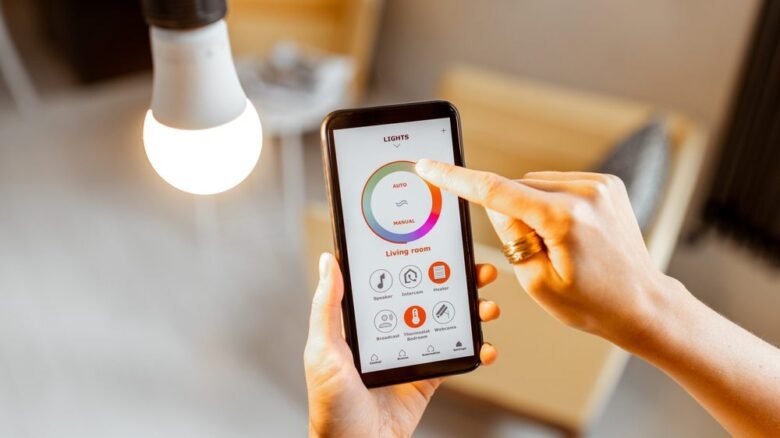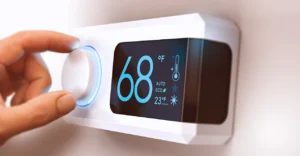Smart lighting is revolutionizing the way we light our homes. It has gone beyond simple switches. You can control the brightness, color, and timing of your home using your smartphone, voice commands, or automated schedules. Smart lighting systems adapt to daily routines and moods. Understanding the basics of intelligent lighting will help you transform your home into an energy-efficient and comfortable space that meets your needs all day long.
Introduction to Intelligent Lighting
Smart lighting is the evolution of conventional lighting systems into intelligent networks. These systems utilize LED bulbs with wireless connectivity that can communicate with your smartphone or home automation hubs. They also allow them to interact with voice assistants such as Alexa and Google Assistant. Smart lighting offers more than just on/off functionality. It also includes dimming, color changing, scheduling, and integrations with other smart devices. It is now more affordable and easy to use, making the technology accessible to anyone who wants to improve their living space without requiring complex installation or technical knowledge.
Understanding Smart Bulbs
Smart bulbs are the basis of a smart lighting system. They replace traditional incandescent and LED bulbs with intelligent options. These bulbs have wireless chips and processors that allow them to communicate with your devices or home network. Wi-Fi is the most popular protocol for connecting smart bulbs, but Zigbee and Z-Wave are also used. Smart bulbs are available in various types. These include white bulbs with different color temperatures, from warm to cold, as well as full-color bulbs capable of producing millions of hues. Smart LED bulbs are more energy efficient than conventional bulbs and last longer.
Installing Your Smart Lighting
Installation of smart lighting systems is easy and requires little technical expertise, making this a great entry point to home automation. Start by downloading the app from the manufacturer and making sure your Wi-Fi is stable and can reach all areas where you plan to install it. Follow the pairing instructions in the app to connect your smart bulbs to your network. You can create groups of bulbs for different zones or rooms. This allows you to control multiple bulbs simultaneously. Set schedules, color preferences, and brightness preferences according to your daily habits. Start with a few light bulbs in areas that are frequently used before you expand to other parts of your home.
Benefits of Smart Lighting
Smart lighting has many benefits that go beyond simple illumination. By scheduling lights to dim and turn off when not needed, you can save energy. Programmable schedules can be used to simulate occupancy while you are away and deter potential intruders. Voice control and smartphone applications eliminate the need for manual switch operation, resulting in a dramatic improvement in convenience. Circadian rhythm support is a way to improve sleep by automatically adjusting color temperature. Remote control features allow you to adjust your lighting anywhere. This ensures you will never come home to a dark house.
Smart Lighting and Comfort
Smart lighting is a wonderful way to improve comfort. These systems can create an ambiance to match your needs, whether it’s bright, cool lighting for work or dim, warm lighting for relaxation. Automated dimming can enhance movie nights by responding to your entertainment system. The gradual brightening of the lights simulates sunrise and helps you to wake up naturally. Adjustable brightness increases reading comfort and reduces eye fatigue without disturbing other people in the room. Pre-programmed lighting scenes create the perfect ambience for dinner parties with just a single command.
Common Smart Lighting Mistakes
You can ruin your experience with smart lighting by making a few mistakes. But being aware of these mistakes will help you avoid them. Start simple and add features gradually. If you don’t pay attention to the Wi-Fi strength in distant areas, it can lead to connectivity problems. You will need mesh networks or WiFi extenders if you want reliable operation. Research device compatibility before buying. If you forget to update your firmware, it can make your system vulnerable to issues with security and prevent new features. Smart lighting is designed to save energy, so don’t ignore dimming and scheduling features.
Smart Lighting: The Future of Smart Lighting
Smart lighting continues to advance rapidly. Exciting developments are on the horizon. Artificial intelligence integration allows lights to automatically learn your preferences and adjust themselves without manual programming. Lights may be able to detect moods, stress levels, or sleep quality using advanced sensors in the future. Integration with augmented realities could overlay digital data onto your physical space using specialized lighting effects. Smart lighting will be more reliable and sustainable during power failures with solar integration and battery backup systems. These innovations will make smart lighting more beneficial and intuitive for modern home comfort.
Transform Your Home Today
Smart lighting is a powerful and simple way to improve your home’s efficiency, comfort, and functionality. Installation is now simple and inexpensive, with immediate benefits. Smart lighting can be used to adapt your home system or a single bulb while also reducing energy usage and improving daily activities. This investment will pay off in comfort, convenience, and security that are unmatched by traditional lighting.
FAQs
1. What is the cost of smart bulbs compared to LED bulbs?
Smart bulbs are typically priced between $10 and $50 per bulb, compared to just $2 to $10 for LED bulbs. However, the added features and energy savings can often justify the higher initial cost.
2. Can intelligent lights work without an internet connection?
Many smart lights can be controlled locally via Bluetooth or hubs when the internet is down.
3. Do intelligent lights consume electricity even when they are turned off?
Smart lights use a tiny amount of power to keep the network connected (typically 0.5 to 5 watts), but their energy saving when they are in active use is much greater.
4. Can smart lights be used with existing dimmers?
Smart bulbs shouldn’t be used with traditional dimmers, as they can cause damage. Instead, use standard switches or smart switches that are designed for LED bulbs.
5. How many years do smart bulbs last on average?
Smart LED bulbs last between 15,000 and 25,000 hours. They are similar to regular LEDs, but the electronic components can have a shorter life span than the LED elements.




